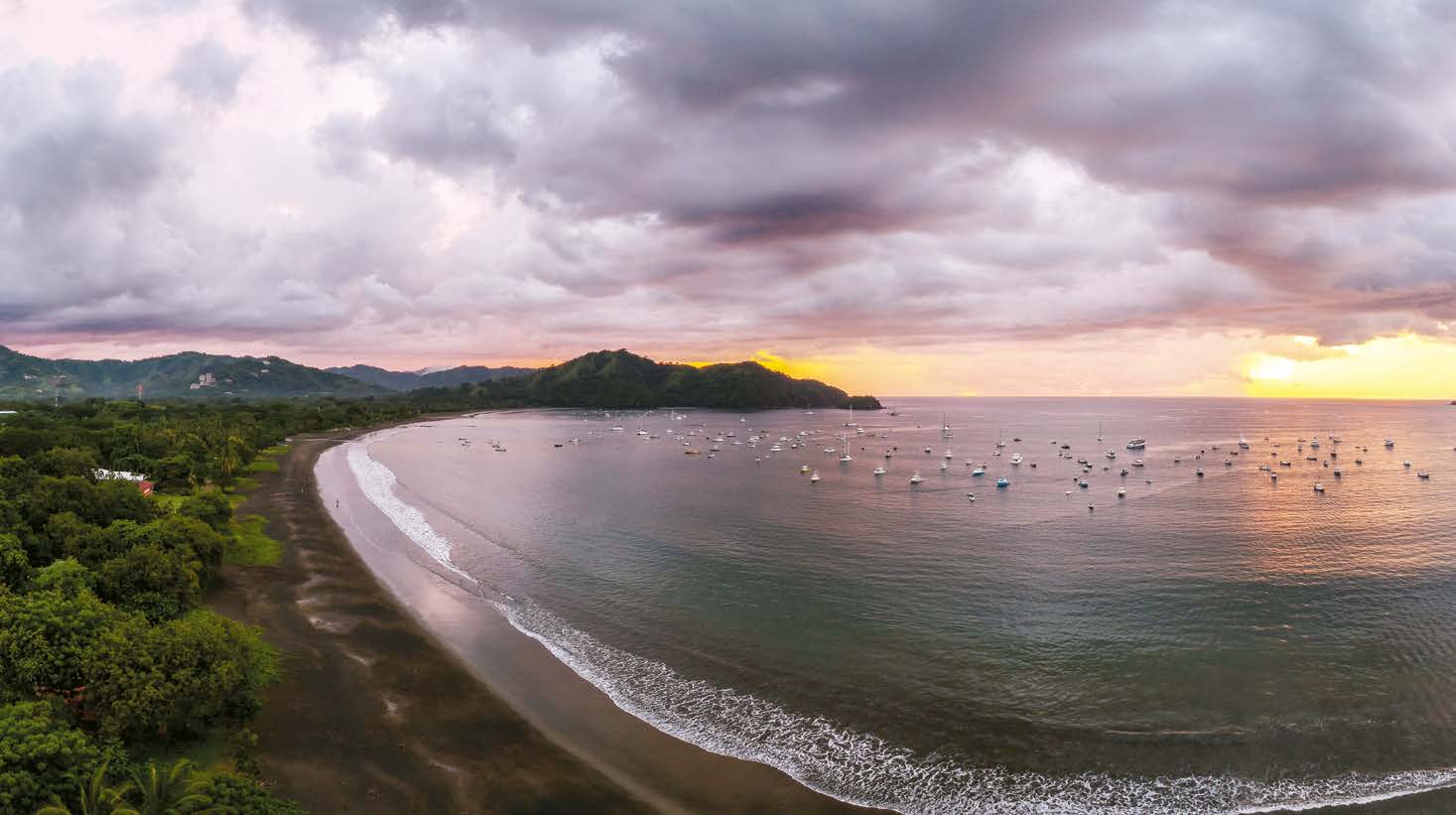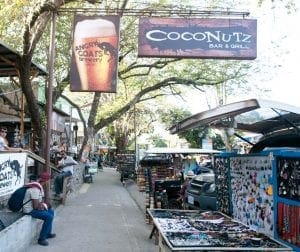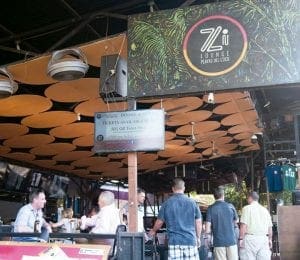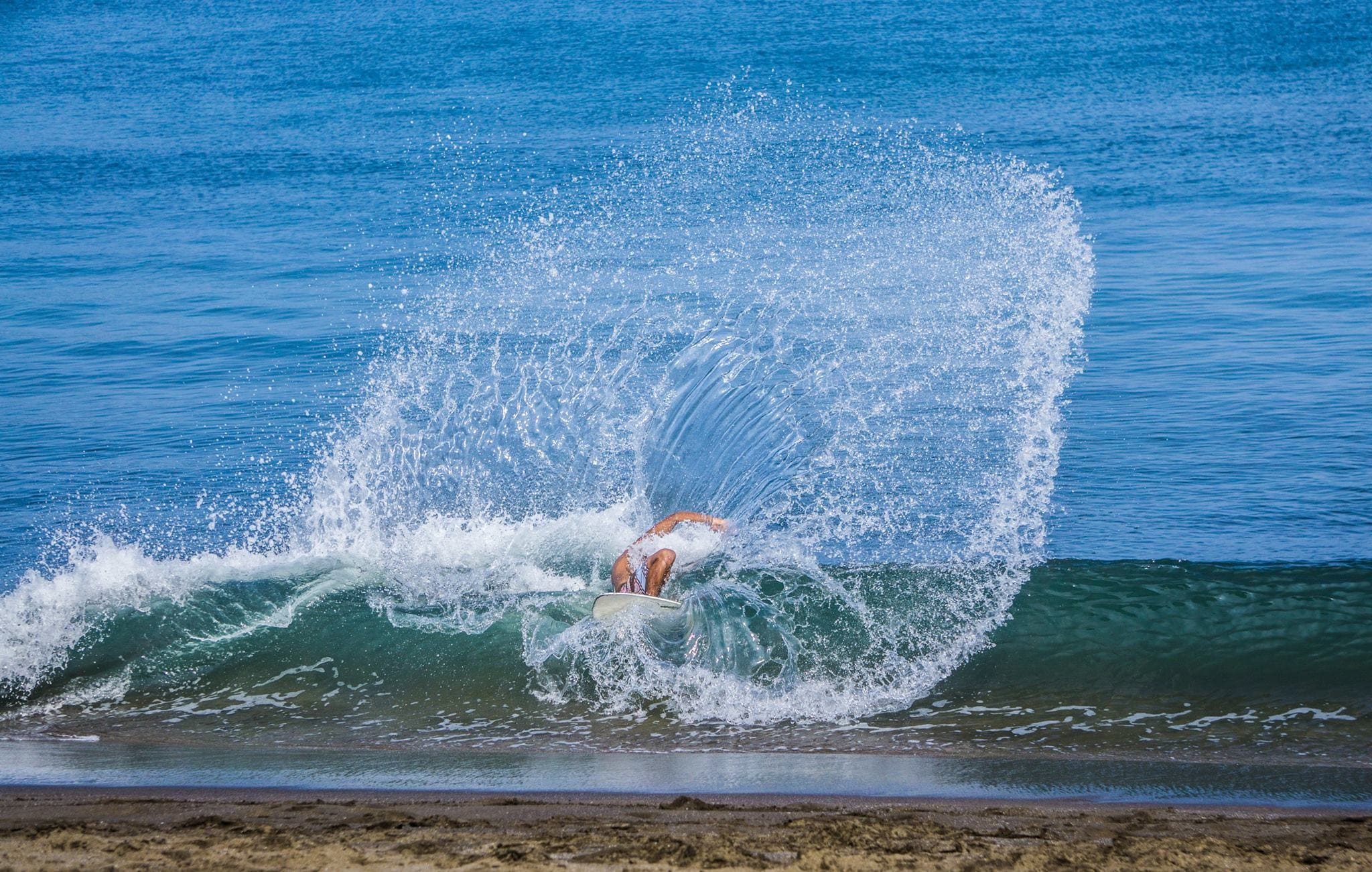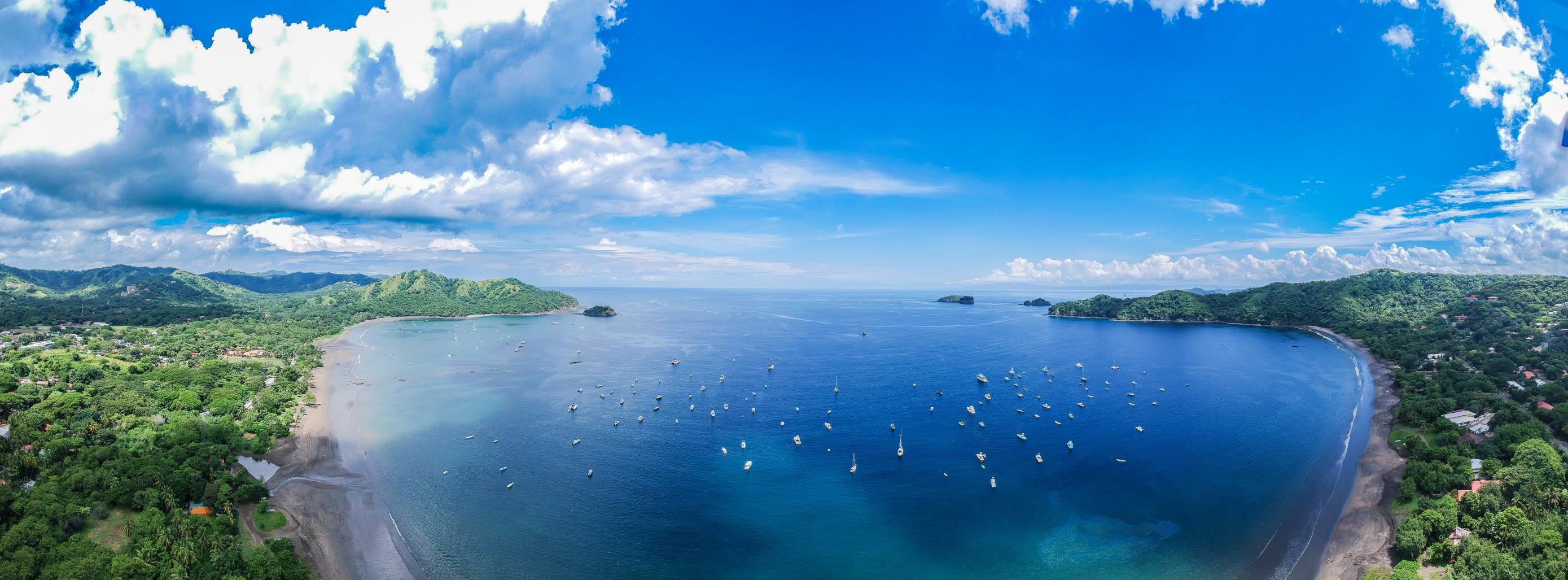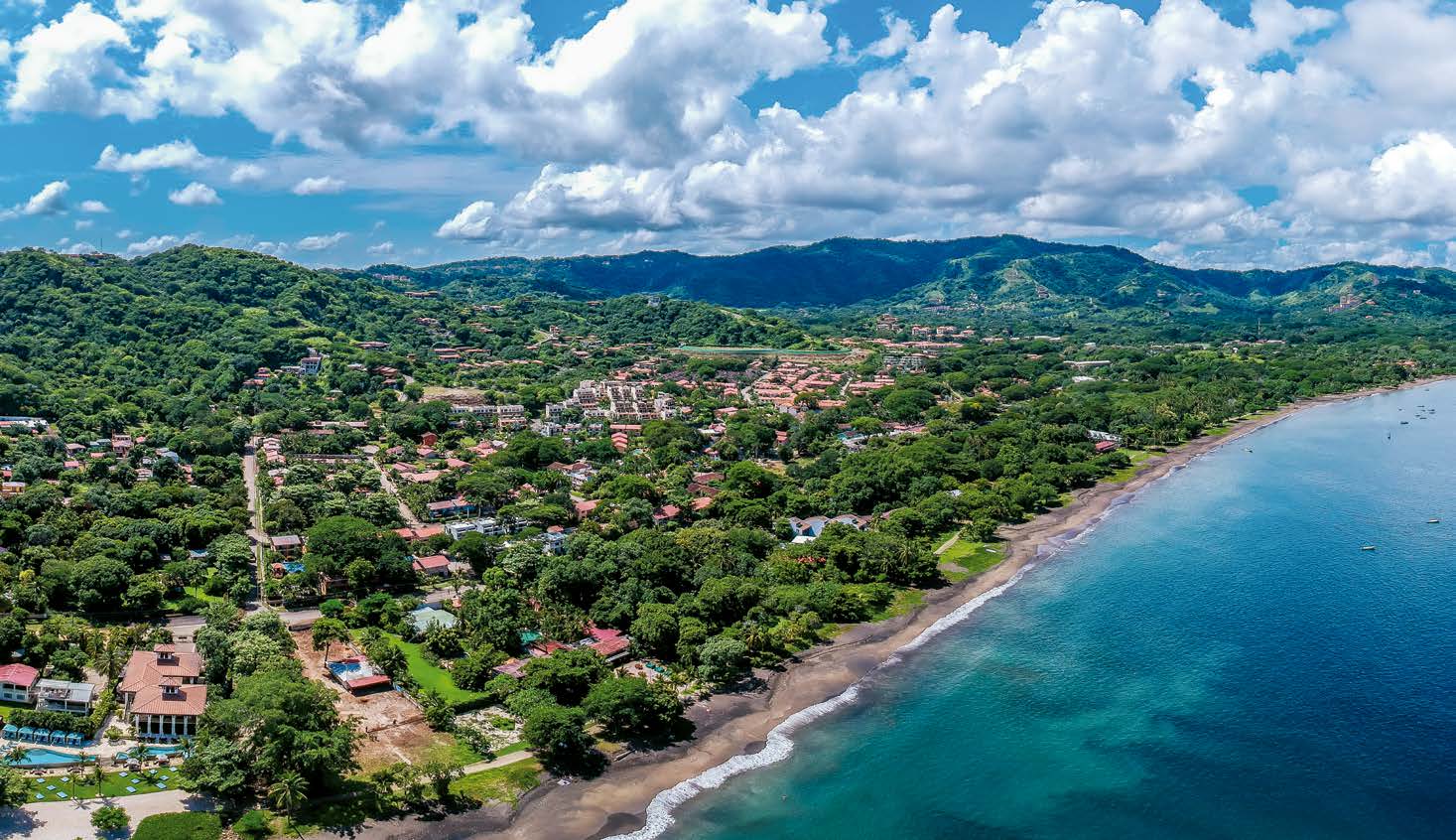
Loco for Coco – Beachfront Bliss in Playas del Coco
Loco for Coco, Playas del Coco: The headlands that enclose the Playas del Coco coastline like a mother’s arms make the shape of a C — which could stand for crazy, chill, caliente, cool, colorful, cacophonous, curious, classic, catastrophic. And Coco can be all of those things.
“I love living here and I absolutely couldn’t imagine living anywhere else,” said Michele Simmons, a 45-year-old event planner from Boston who has lived in Playas del Coco for five years. “You can’t bond with people that come and go. Here they stay, and you get to know each other, and you get to care about each other, you build a family with each other.” Playas del Coco is often also referred to as Coco Beach Playa del Coco or simply Coco
Playas del Coco is the northernmost settlement on Costa Rica’s Pacific Coast that’s big enough to call a city, and the main street is usually teeming with both locals and visitors meandering past the souvenir shops, the bars and the casino. Coco Beach has a reputation as a party town, a retirement destination and a mecca for water sports, and if you explore it more closely you’ll find high-end housing, upscale restaurants and magnificent views.
But Coco Beach is more than the sum of its parts. There is a vibrant expat community here of foreigners who have found their home away from home, many of whom have no plans to leave. And there is a deep-rooted Tico community here dating back decades, people who would survive here somehow even if there were no foreigners. But of course there are plenty of foreigners.
There’s a group of what my girlfriend and I call los veteranos, the veterans, who gather under the big rubber tree in front of Bambú Beach Front Bar every day, drinking and smoking and swapping tales. You can also see these old-timers sitting at Zi Lounge every day, come hell or — as we learned during Tropical Storm Nate — high water.
“This is a place to meet people, all kinds of people,” said Nuria Barrantes, a 54-year-old real estate agent who first moved to Playas del Coco in 1989. “We are a friendly people, it’s something intrinsic to us. We are welcomers.”
You never get really bored
I moved here in June with my Tica girlfriend, and pretty soon we were friends with seemingly everyone in town. It became impossible to go out without running into someone we knew, and usually several people. All the North Americans have gone native in one respect — without a thought we greet the opposite sex with a kiss on the cheek.
“You never get really bored of the same old, same old,” said Freddy Barahona, 53, a lawyer and owner of the Solo Bueno chocolate and cigar shop. “There’s always people coming, people that come here with a dream.
“I always tell my clients when they come here and they fall in love, I say, ‘Don’t marry the first girl that you ask to dance.’ Enjoy this visit, come back again, then come back again, and after your third trip you make a decision if you invest or buy a home or something.”
Coco has the feel of a one-street town, accessible by a highway that turns into Avenida Central, where most of the restaurants, bars, grocery stores, souvenir shops and other businesses are clustered.
This road leads straight to the beach, where there is a curvy sidewalk with grass on one side and sand on the other called “Paseo Amor de Temporada” (“Walkway of Seasonal Love,” named for a popular song). Here there’s a basketball court, a skate park, a number of vendors, a lot of pale tourists in bathing suits and an array of Tico families lazing on blankets in the shade.
Venture beyond this main drag, and you’ll find posh gated communities, ordinary Costa Rican neighborhoods and a few dodgy barrios full of shady characters who will either sell you drugs or rob you to buy their own.
Welcome to paradise. And be careful what you wish for.
Where do we grow from here?
Lucas Rivera, 34, is an architect by training who owns Coco Tap Water, and whose family owns the three Luperón supermarkets and the two M&M Hotels. He is a successful businessman and an upbeat person, but he sounds a dark note on the difficulty of major growth in Coco because water rights are unobtainable for most big projects.
“When I came back [from San José] in 2011, it was already a depressed economy, and I was expecting this issue to be resolved any time,” he said. “So I’ve been waiting for six years, and I’m now getting accustomed to the idea of what the Dutch economists call a ‘zero-growth economy.’ I’m trying to make my peace with it.”
Yet Lucas says the locals here are a happy-go-lucky people who always mix work with play.
“Costa Ricans are not ones to work to death,” he said. “They’re not commonly known to consume themselves in long stretches of work without play. They do a little work and a little play every day. That’s part of town and that’s part of our social ethos and work ethic in town.”
I asked Lucas why so many expats gravitate to this place.
“In Coco you are never far away from social interaction,” he said. “You can move to a popular neighborhood, you can move to an expat neighborhood, you can move anywhere, but since you are getting your services done in Coco, you go about town every day, more than once, and you end up making friends and acquaintances, and they become part of your social routine….
“If I were to walk in town four times a day and I have to say hello to 400 people four times a day, I will have to. If I didn’t say hello and smile at each one of the ones who are looking at me, they would think either I’m in trouble, that I don’t want to talk to them, or that I’m crazy. Ticos are extremely sensitive to that sense of always being open to receiving a hello, how are you, todo bien. They don’t go very deep, but they’re very strict about that.”
Growing too fast?
Barahona, whose father moved here in 1956 to spend three months and never left, thinks Playas del Coco has a different problem — too big, too soon.
“Coco Beach has a problem of growing too fast. We don’t have city engineers that allow for growth in a methodical way, so it grows organically,” he said. “In the late ’90s, a lot of construction was done and permits were issued without any planning, so we had a problem with the water system. It’s not a lack of water, it’s a lack of infrastructure.”
Barahona was born in 1964 and has spent his entire life in Playas del Coco except for the few years he spent earning a law degree in San José.
“It used to be a fishing village with around 12 different families, in the ’60s and ’70s, and everybody knew each other,” he said. “Starting in the ’90s, the town started growing, and no longer do you know who’s who.”
Coco Beach was one of the first beach towns in Guanacaste accessible by road, and in the old days it was the go-to vacation spot for well-to-do Ticos from the Central Valley.
There was no electricity here until the 1970s, nor was there any maritime zone law prohibiting construction within 50 meters of the ocean. So almost all the local families built their homes right on the beach, and they adjusted their body clocks to the rhythms of the sun.
“When I was 6 or 7 years of age, at 4 o’clock in the morning you would see everybody would be on the beach with their fishing lines, and you will catch whatever — jacks mostly, bass, snook,” Barahona said. Then everyone would go to bed by 7 p.m.
“Everyone was living in more or less a campsite,” Rivera said. “By the ’50s, kids living and growing up here didn’t know what a fresh lettuce looked like.” He said that people who grew up here in the 1970s recall that there were only three televisions in town.
The tourists started coming in the 1980s. And the 1994 surfing movie “Endless Summer II,” which featured Tamarindo legend Robert August and the epochal waves of Costa Rica, inaugurated a flood of tourism.
“ ‘Endless Summer II,’ that was a before and after,” Rivera said. “There was just waves of people coming to Guanacaste after that movie started screening.”
In the 1990s and 2000s came a slew of big housing developments, which greatly expanded the town, but this construction frenzy came to a crashing halt with the recession of 2008.
“It was like I went to bed and I woke up the next day and … time stands still,” recalled Barrantes. “I had clients, I had an independent real estate company and we sold a lot, we were doing fine, and all of a sudden it stopped.”
Photos by Kim Irons
Is this place safe?
I actually got mugged the first time I came to Coco, in 2008, but I was doing something stupid, walking alone in a dark place on the beach at night. Four men jumped me, beat me up and relieved me of everything I was carrying, which was 6,000 colones and half a pack of cigarettes. I’m sure they were almost as disappointed as I was.
“I feel extremely safe here,” said Simmons, the exuberant event planner, who spends a lot of time at the gym but is somewhat diminutive. “I don’t ever feel in danger. I ride my scooter everywhere, I have a bicycle, I ride that everywhere, it’s all about riding through town and just saying hi to everyone, ‘Hola, Hola!’ That’s how you get to know everyone.”
Last summer a couple of men were shot to death in front of the Sandbar Restaurant in Playa Hermosa, just north of Coco. They were said to be from the drug gang called the Paveños, from Pavas in the Central Valley, and it’s widely assumed that they were killed by rival drug dealers.
“When you’re thinking about party, Coco has a huge reputation for that,” said Rivera. “I don’t know which came first, the demand or supply, but Coco became known for a place where you could source drugs very easily. If you wanted to party and do cocaine, and you were in the Guanacaste area, you didn’t have to think too hard.”
Por fin
And … the people keep coming. Even in the low season, it seems the streets of Coco are flooded with visitors of all shapes, sizes and colors.
But the bedrock of this town will always be the Ticos, the people who were here before the rest of us. Yes, tourism is this town’s once and future economic engine, but it’s the locals who grease the wheels that keep the train running.
“El Coco remains an enchanting village that welcomes local as well as international tourists,” said Barrantes. “It’s a sweet, lovely town, and a protector of its environment. It’s a pueblo that’s tranquilo, relaxed, where you can come to do work or leisure. It’s a small town that aspires to be big, but it’s enchanting.”
Just ask the veteranos under the big rubber tree in front of the beach. You can find them there every day.




